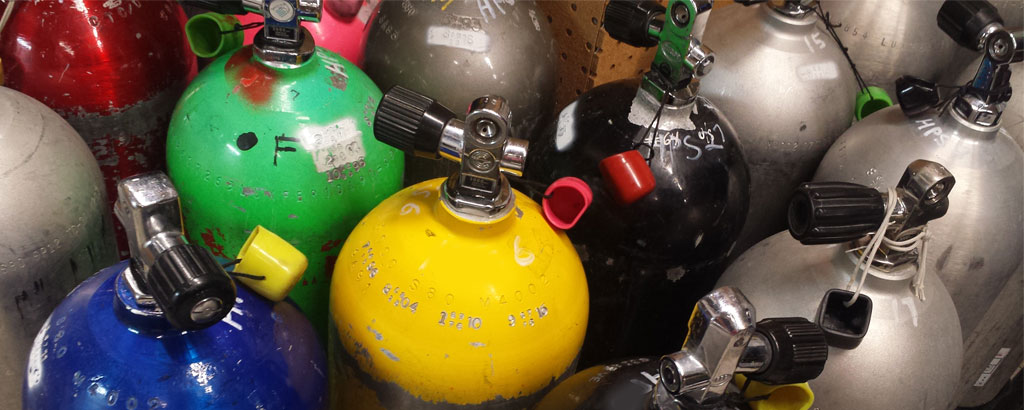What is Doppler Decompression?
I was asked in class “What is Doppler?” and “what does it have to do with No-Decompression limits?” that we see on scuba diving charts. We’ve heard the term “Doppler radar” on the weather channel, but what does that have to do with scuba diving?
You can learn quite a bit about decompression theory if you want to nerd up on the web, or simply take a course in the science of diving. But if you’re just curious about a few simple things, here’s a list of nerdy little anecdotes about doppler, ultrasound, goats, scuba diving, bridges, submarines and to keep it interesting…bats, the only flying mammals on the planet.
A History on Decompression Theory
1794 Lazzaro Spallanzani, an Italian biologist (and Catholic priest), was able to demonstrate how bats could hunt and navigate through sound, not vision. “Ultra” sound, being higher in frequency than perceptible to the human ear, allowed these animals to find their next meal.
1842 Christian Doppler, Austrian mathematician & discoverer of the Doppler Effect (an observed frequency of wave depends on the relative speed of the source and the observer). The gist of it is, that sound coming directly from a source (say a megaphone, pointed at your ear) will be louder than a megaphone pointed away from your ear.
1871 Dr. Alphonse Jaminet, the Eads Bridge physician, and Dr. Andrew Smith, the Brooklyn Bridge physician, published reports of their “caisson disease” case studies in 1871-1873. Caisson disease cases were commonly seen where bridge workers labored under pressures up to 55psi while constructing bridge piers in a watertight retainer known as a “caisson”. These doctors were among the first to write their findings on the “disease”.
1877 Pierre & Jacques Curie discover ultrasound probes which send and receive sound waves by use of piezoelectric effect.
1906-1908 John Scott Haldane performed decompression of ambient pressure tests on goats – 85 goats to be exact. Haldane believed absorption and elimination of nitrogen was an exponential process. His concept of “half times” measured partial pressures for 20 minute intervals against percentage of Nitrogen saturation.
1915 US Navy adopts Haldane’s tables for use in their diving programs.
1917 Paul Langevin, a French physicist (and human rights activist) was the first to use acoustic technology for a purpose. Langevin was commissioned to invent a device to detect objects at the bottom of the sea. His inspiration came from the sinking of the Titanic, but his use of echo location was for detecting submarines in World War I. The war was over before he could put it to use.
1930 – US Navy modified the Haldane tables based on their own tests on sailors. Approximately 125 divers were tested after performing various dives. No goats were harmed during this process.
1942 and 1943 Emile Gagnan and Jacques-Yves Cousteau, invented the Aqua-Lung or self contained breathing apparatus (SCUBA).
1956 Ian Donald & Tom Brown, Glasgow developed the first prototype for ultrasound instruments to detect ship flaws.
1949-1951 Douglas Howry and Joseph Holmes, from the University of Colorado, pioneered ultrasound equipment for 2 dimensional scanners which would detect breast tumors.
1970s Continuous Wave Doppler technology becomes widely used in British and American hospitals for bouncing sound waves off body structures and tissues to detect the sounds that “bounce back”. This creates an image which is then detectable by the human eye.
1980s Haldane and the US Navy dive tables were further modified, adding safety measures for recreational divers.
But wait…what about the Doppler Radar thing?
Doppler Radar vs Dopper Ultrasound
So what does the Doppler radar we hear about in weather have to do with diving? Really not much other than it shares the ability to use sound waves to detect frequency changes, which allows meteorologists to “see” motion in the atmosphere. Similarly, frequency changes detected in tissues (i.e. nitrogen bubbles) are detected in diver tissues, which helped the Navy (and other agencies) create the more modern no-decompression limits.
Today
We have the ability to take a scuba classes, travel the world and ask questions about the how and why of all things. You may find some of the most interesting answers on decompression theory share stories of dreaming big, collaborating with others and seeing the world.

